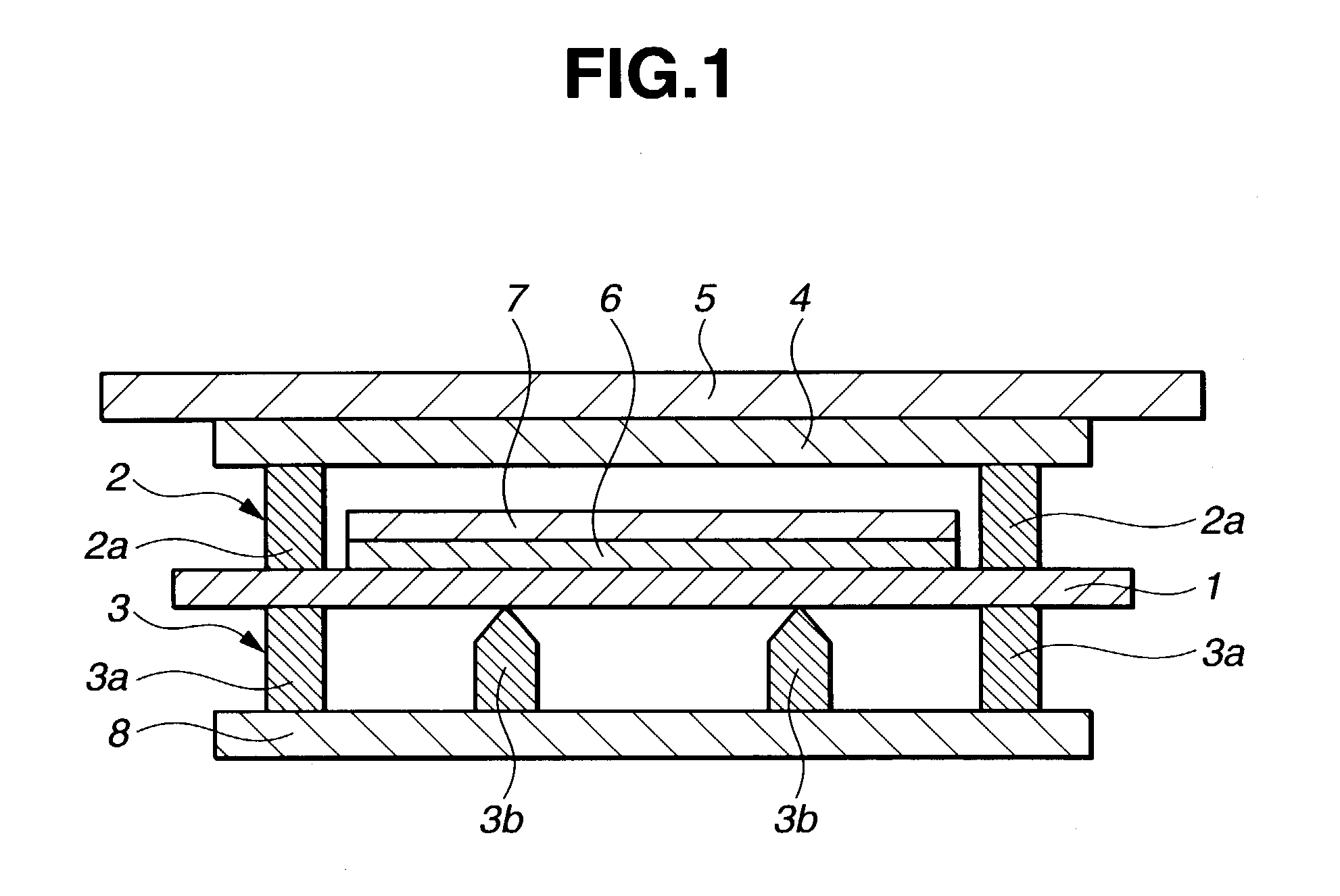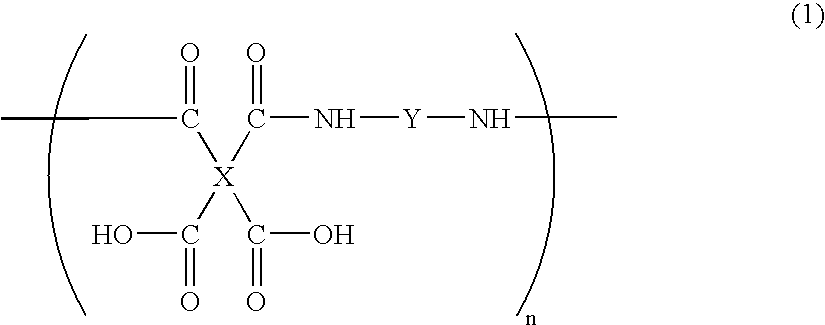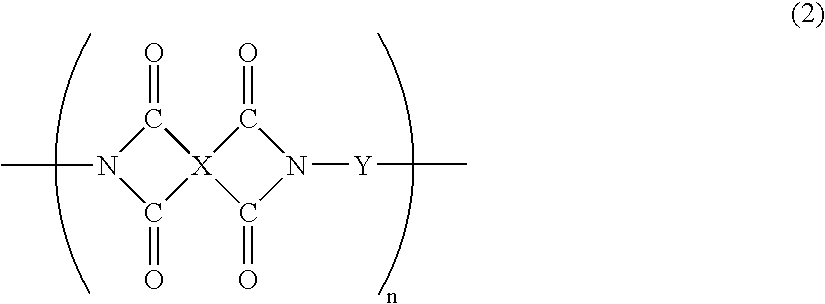Conductive resin composition
a technology of conductive resin and composition, applied in the direction of printed circuit assembling, non-conductive materials with dispersed conductive materials, greenhouse cultivation, etc., can solve the problem reduce the dependence of volume resistivity on thickness, reduce the effect of low volume resistivity
- Summary
- Abstract
- Description
- Claims
- Application Information
AI Technical Summary
Benefits of technology
Problems solved by technology
Method used
Image
Examples
synthesis example 1
[0074]A flask equipped with a stirrer, thermometer and nitrogen inlet was charged with 9.66 g (0.03 mol) of BTDA as a tetracarboxylic dianhydride component and 30 g of N-methyl-2-pyrrolidone. To the flask, 17.0 g of a N-methyl-2-pyrrolidone solution containing 6.00 g (0.03 mol) of DPE as a diamine component was added dropwise at a controlled rate so that the temperature of the reaction system might not exceed 50° C. After the completion of dropwise addition, the reaction solution was stirred for 12 hours at room temperature for driving the reaction to completion, yielding a yellowish brown clear solution of polyamic acid. The solution had a viscosity of 29 Pa·s and a resin solids content of 25.1%. This is designated polyamic acid solution No. 1.
synthesis example 2
[0075]In a reactor as used in Synthesis Example 1, 29.42 g (0.10 mol) of BPDA, 7.46 g (0.03 mol) of APM and 28.73 g (0.07 mol) of BAPP were reacted in 196.8 g of cyclohexanone at room temperature for 12 hours, yielding a solution of polyamic acid. To the polyamic acid solution was added 30 g of toluene. A Dimroth condenser with a Dean-Stark trap was attached to the reactor where reaction was conducted at 180° C. for 8 hours, synthesizing a solution of polyimide resin. The solution had a viscosity of 66 Pa·s and a resin solids content of 25.3%. This is designated polyimide solution No. 1.
synthesis example 3
[0076]A glass beaker having a volume of 1 liter was charged with 500 g of methylvinylsiloxane of the formula (i) having a viscosity of 600 cS and 20 g of methylhydrogenpolysiloxane of the formula (ii) having a viscosity of 30 cS.
[0077]
The contents were agitated and mixed by operating a homo-mixer at 2,000 rpm. With 1 g of polyoxyethylene (9 moles addition) octylphenyl ether and 150 g of water added, agitation was continued at 6,000 rpm until phase inversion occurred, with thickening observed. While the solution in this state was sequentially agitated at 2,000 rpm, 329 g of water was added, yielding an O / W type emulsion. The emulsion was then transferred to a glass flask equipped with an agitator having an anchor-shaped impeller. While agitating at room temperature, a mixture of 1 g of a toluene solution of a chloroplatinic acid-olefin complex (platinum content 0.05%) and 1 g of polyoxyethylene (9 moles added) octylphenyl ether was added to the emulsion whereupon reaction was effecte...
PUM
| Property | Measurement | Unit |
|---|---|---|
| elastic modulus | aaaaa | aaaaa |
| volume resistivity | aaaaa | aaaaa |
| particle size | aaaaa | aaaaa |
Abstract
Description
Claims
Application Information
 Login to View More
Login to View More - R&D
- Intellectual Property
- Life Sciences
- Materials
- Tech Scout
- Unparalleled Data Quality
- Higher Quality Content
- 60% Fewer Hallucinations
Browse by: Latest US Patents, China's latest patents, Technical Efficacy Thesaurus, Application Domain, Technology Topic, Popular Technical Reports.
© 2025 PatSnap. All rights reserved.Legal|Privacy policy|Modern Slavery Act Transparency Statement|Sitemap|About US| Contact US: help@patsnap.com



